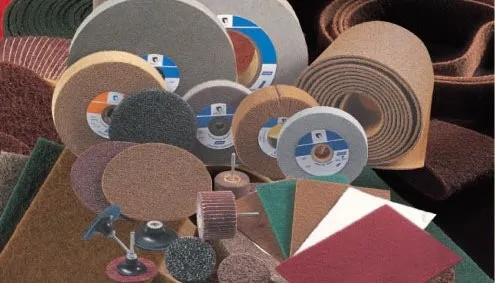Metal casting or casting operations is a fascinating process in which abrasives play a very important role throughout the casting process.
While the focus may have shifted from cast bells and gun barrels to products that impact our daily lives, from car engine blocks to water pump impellers in water purification plants to the gears and components that drive wind turbines to generate electricity...
As the process becomes more mechanized and controlled, yield and quality remain the most critical elements of the casting process, although the fundamentals of creating metal masterpieces remain largely unchanged. The casting process begins with a design concept and is created by the engineering needs of the metal casting, whether it is sand molding, die casting, investment or centrifugal casting.

Depending on the design and type of casting method chosen, it may be necessary to fabricate forming tools, which are primarily made of wood and "hold" the sand to form the front face of the casting as well as any cores that may be needed. Abrasive abrasive solutions used in this process include coated abrasives in sheet, roll and disc form for primary and secondary finishing of wood and metal parts.
Once the mold and its individual components are completed, the molding process occurs. In a foundry, molds are filled with sand and cores are placed to form funnels and channels to guide the flow of molten metal into the mold.
As the sand processing comes to an end, comes perhaps one of the most dangerous yet exciting parts of the entire process - the smelting.
Metal is added to the furnace and melted into liquid form, making it easy to pour. Scrap metal, raw feed metal, or a combination of both can be added to the melting process to create the desired alloy material. The smelting process also provides an opportunity to remove any contaminants from the mixture. When using scrap metal in the smelting process, it is crucial to use a high-quality, fit-for-purpose cutting blade to cut the metal fragments to eliminate some contaminants. It is also important to select metal-specific grinding products to eliminate any potential contamination (for example, processing aluminum scrap with products containing iron contaminants). Once the metal reaches the desired melting stage and has been tested for chemical composition and impurities, the molten metal can be poured. At this point, the mold is filled with hot metal and cooled.
Depending on the type of metal and the size of the casting, the cooling period can range from a few minutes to a few days. Once cooled and solidified, the new casting is removed or ejected from the mold and may be vibrated to remove remaining sand or other molding material. One technique used for preliminary cleaning is shot blasting. At this time, the gate, runner and riser can be broken off or cut off with a cutting blade. Depending on the size, an angle grinder or a larger engine-driven machine may be used with a cutting blade to remove the excess. By using a professional angle grinder , any burnt sand can also be coarsely ground .
After the initial cleaning process, the casting now needs to be trimmed for further processing. Resin-bonded dressing wheels are the industry standard where large amounts of material need to be removed . These grinding wheels are manufactured with a variety of abrasive grains, depending on the metal casting. New technology ceramic particles have proven to be the product of choice as they have higher material removal rates and can also keep casting temperatures lower. Smaller areas of metal removal can be accomplished by using handheld angle grinders, which also come in a variety of grit sizes and abrasive grains, depending on the metal and application.
The next stage is inspection and inspection, which can include visual or X-ray inspection, indentation penetration testing (especially for heat-sensitive metals) and other non-destructive testing. Castings are also subjected to precision measurements and selective destructive testing to check for internal porosity, inclusions and or shrinkage.
Not all castings are completed in the roughing stage, some require further processing to achieve the desired effect. Milling and turning can be performed to extremely tight tolerances on CNC machines . Some parts that require grinding and finishing, such as automobile crankshafts, must first be ground and polished with a vitrified bond grinding wheel , and then with a coated abrasive belt.
Cylindrical parts can be ground internally and externally using grinding wheels of various specifications, grades and grit sizes. Large surfaces that need to be absolutely flat can be surface ground using grinding wheels, cup wheels or abrasive discs. These grinding wheels are manufactured from a range of conventional (aluminum oxide, zirconium aluminum, ceramic) and super (diamond, CBN) abrasives depending on the application and end product requirements. For applications that require a finer, more precise surface treatment, non-woven abrasives are also required, and if a smooth surface is required, a polishing slurry can be used for super finishing.
